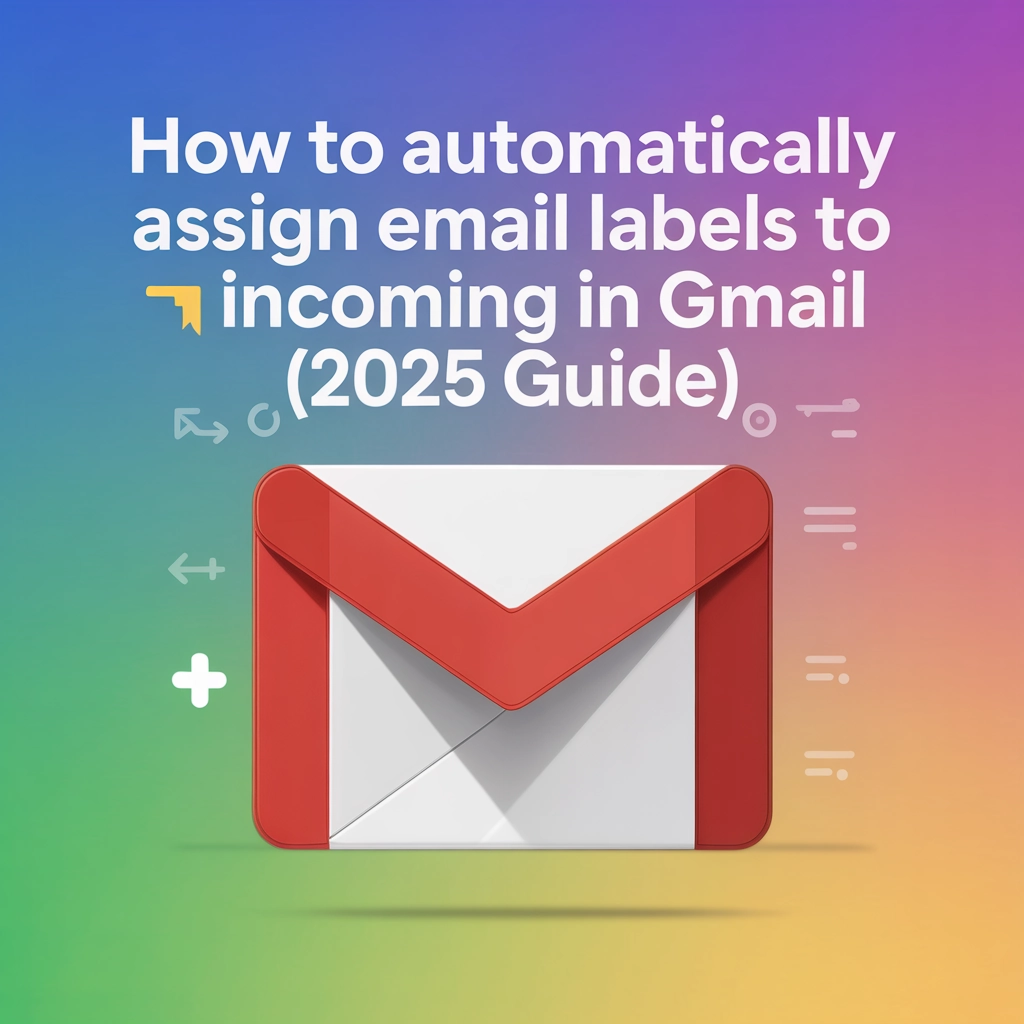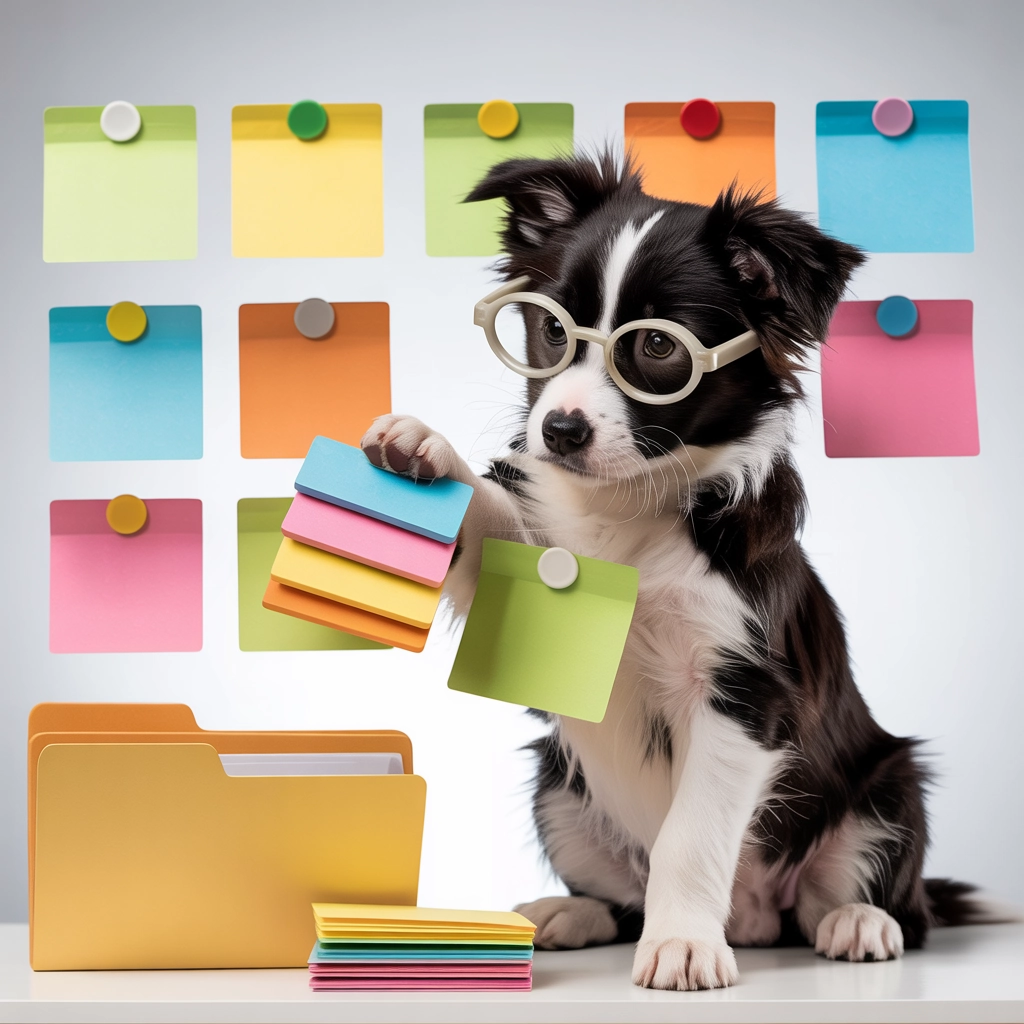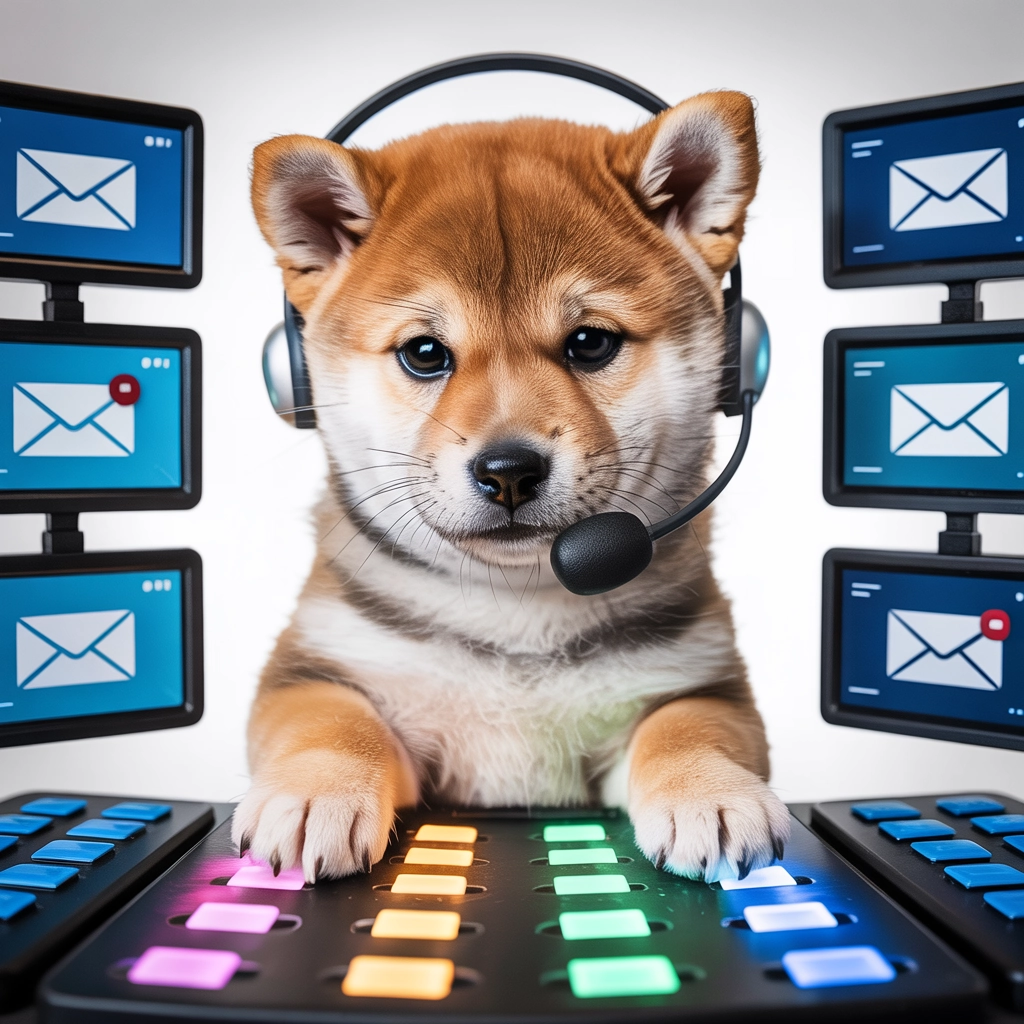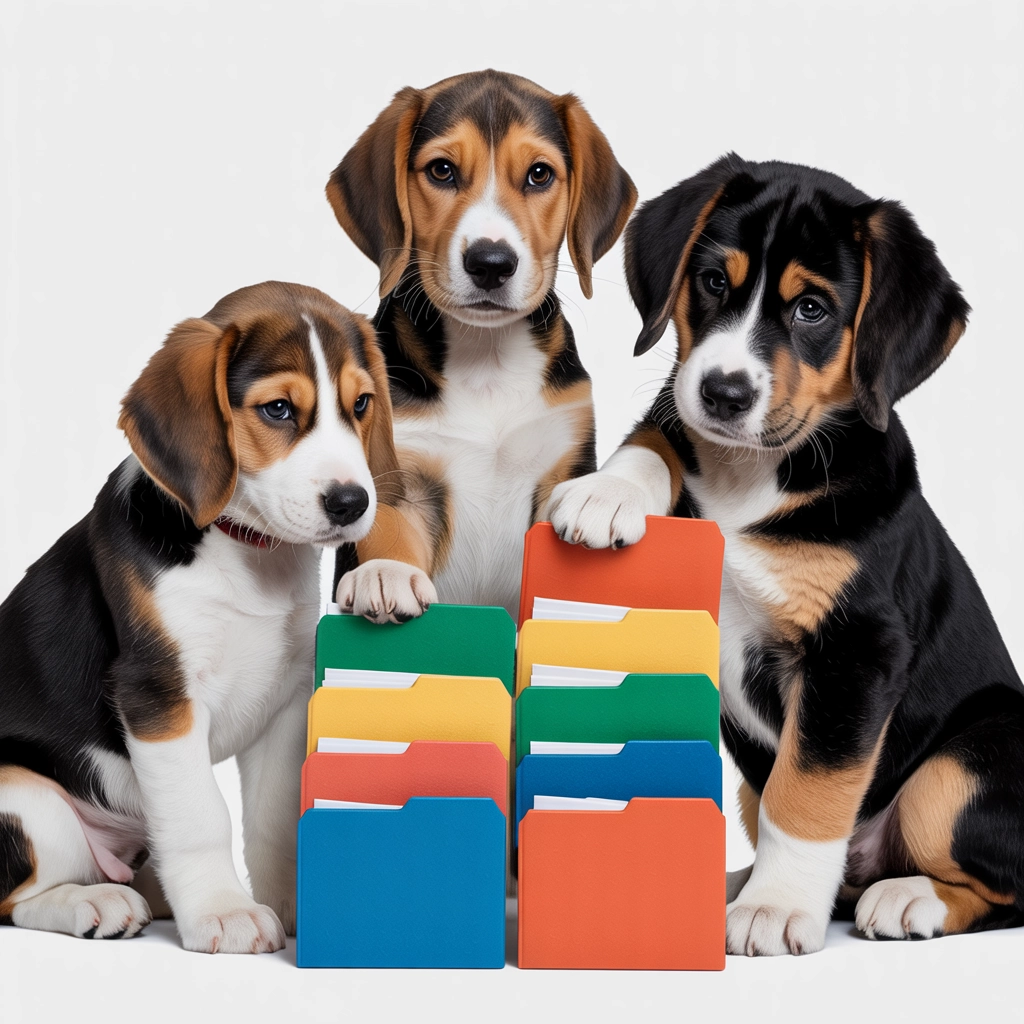How to Automatically Assign Email Labels to Incoming Mail in Gmail (2025 Guide)
Transform your chaotic inbox into an organized powerhouse with Gmail's automatic labeling features. Learn step-by-step how to set up filters, use AI-powered categorization, and reclaim hours of your workweek.

 🐾
🐾How to Automatically Assign Email Labels to Incoming Mail in Gmail (2025 Guide)

If your inbox looks like a digital junk drawer that swallows important messages whole, you're not alone. The average professional spends 28% of their workweek managing emails—that's over 11 hours weekly just sorting through messages!
But what if your inbox could organize itself? In 2025, Gmail's automatic labeling capabilities have evolved into powerful productivity tools that, when properly configured, can transform chaos into clarity without any daily effort on your part.
Let's dive into how you can set up Gmail to automatically categorize your incoming messages, so you never miss another important email.
Why Labels Beat Folders Every Time
Unlike traditional folder systems that hide emails away, Gmail's labels are like digital sticky notes that help you categorize messages without removing them from your inbox. The real magic happens when you automate this process.
The benefits of automatic labeling include:
- Multiple classifications: A single email can have several labels (try doing that with folders!)
- Visual organization: Color-coded labels provide instant visual cues about email content
- Faster searching: Labels create searchable categories that make finding specific emails a breeze
- Priority management: Automatically identify high-priority messages at a glance

Setting Up Basic Automatic Labels in Gmail
Step 1: Create Your Labels
Before automating anything, you need to create the labels themselves:
- In Gmail, scroll down the left sidebar and click "Create new label" (or find it under the "More" section)
- Name your label something descriptive (e.g., "Client Emails," "Invoices," "Team Updates")
- For organizational hierarchy, you can nest labels under parent labels (e.g., "Clients > Project A")
- Choose a color by hovering over your new label, clicking the three dots, and selecting a color
Pro tip: In 2025's Gmail, you can now create up to 500 labels per account and use emoji in label names for even faster visual recognition.
Step 2: Create Filters to Automatically Apply Labels
Now for the automation part! Here's how to set up filters that automatically apply your labels:
Method 1: Using the Search Bar
- Click the search bar at the top of Gmail
- Click the options icon (looks like a funnel) on the right side of the search bar
- Enter your filter criteria:
- From: Emails from specific senders
- To: Emails sent to specific addresses
- Subject: Emails with certain words in the subject
- Has the words: Specific content within emails
- Has attachment: Only emails with attachments
- Click "Create filter"
- Check "Apply the label" and select your label from the dropdown
- Optionally, check "Also apply filter to matching conversations" to label existing emails
- Click "Create filter"
Method 2: From an Existing Email
- Open or select an email similar to what you want to filter
- Click the three dots (more options) at the top of the email
- Select "Filter messages like these"
- Adjust the filter criteria if needed
- Follow steps 4-7 from Method 1
Advanced Filter Techniques for Power Users
In 2025, Gmail's filtering capabilities have become significantly more powerful. Here are some advanced techniques:
Using Search Operators for Complex Filters
Gmail's search operators allow for extremely specific filters:
from:(@company.com)- Emails from anyone at a specific domainsubject:(meeting OR call)- Emails with either "meeting" or "call" in the subjecthas:attachment filename:pdf- Emails with PDF attachmentslarger:5M- Emails larger than 5 MB-label:inbox has:attachment- Attachments not in your inbox
Example filter: from:(@client.com) OR subject:(project X) has:attachment -in:trash
This would catch all emails from your client's domain, any emails about "project X," but only if they have attachments and aren't in the trash.
Combining Multiple Actions with a Single Filter
When creating a filter, you can apply multiple actions:
- Apply different labels simultaneously
- Mark as important
- Star the message
- Skip the inbox (archive)
- Never send to spam
For instance, you could create a filter that labels client emails, marks them as important, and stars them—ensuring you never miss critical communications.

AI-Powered Labeling: The 2025 Game-Changer
The biggest advancement in Gmail organization for 2025 is AI-powered labeling. Unlike traditional filters that require exact criteria, Gmail's AI can now understand context and categorize emails intelligently.
Gmail's Native AI Classification
Google's Gemini integration with Gmail now offers:
- Content-aware labeling: Automatically detects email purpose (invoice, question, introduction, etc.)
- Sentiment analysis: Labels urgent or high-priority messages based on content tone
- Smart categorization: Creates suggested labels based on your email patterns
To enable these features:
- Go to Gmail Settings > AI Assistants
- Toggle on "Smart Labeling"
- Select which AI features you want to use
- Choose whether to allow AI suggestions or full automation
Third-Party AI Email Assistants
For even more advanced capabilities, connect Gmail to specialized AI tools like:
- Tailforce's Kana: Integrates with Gmail to provide advanced email organization with customizable AI rules
- EmailGPT: Uses natural language processing to categorize emails with remarkable accuracy
- Sortd: Combines AI labeling with visual organization boards
Most of these tools work through secure Gmail API connections and offer free trials to test their capabilities.
Best Practices for Label Organization
A few strategic tips will help you maximize the effectiveness of your automated labeling system:
Create a Logical Label Hierarchy
Organize labels in a way that makes sense for your workflow:
Clients/
├── Active/
│ ├── Project X
│ └── Project Y
└── Past/
└── Archived Projects
Team/
├── Announcements
├── Meetings
└── Social
Personal/
└── Important
Use Color Strategically
Colors create visual patterns that help you process information faster:
- Red for urgent/action required
- Green for positive news/approvals
- Blue for team communications
- Yellow for items needing review
- Purple for personal matters
Implement the "Touch Once" Rule
With automatic labeling, embrace the "touch once" rule:
- Process labeled emails in batches
- Handle each email just once
- Take immediate action (respond, delegate, or archive)
This approach can reduce email handling time by up to 40%.

Mobile Considerations
While Gmail's mobile app has fewer filter management options than the desktop version, you can still benefit from your automatic labels:
- Labels appear in the mobile interface for easy browsing
- Use the "Go to labels" option in the hamburger menu to quickly access labeled emails
- Set up important label notifications through the app settings
- Create filters on desktop that will apply to mobile-received emails
Pro tip: In 2025, Gmail's mobile app finally allows you to create basic filters directly from your phone—just tap the three dots in a message and select "Create filter."
Troubleshooting Common Issues
Even the best automation systems occasionally need adjustment:
- Messages not being labeled: Check for conflicting filters or typos in your filter criteria
- Too many labels causing confusion: Consolidate similar labels and use nesting
- Important emails getting buried: Create special filters for VIP contacts with notifications
- Filter overload slowing performance: Gmail handles up to 1,000 filters efficiently; beyond that, consider consolidating
Conclusion: Your Path to Email Zen
Automatic email labeling isn't just about organization—it's about reclaiming your time and mental energy. By implementing the strategies in this guide, you can transform your Gmail experience from chaotic to controlled.
Start small with a few key labels and filters, then gradually expand your system as you become more comfortable. Before long, you'll wonder how you ever managed without automatic labeling.
Remember, the goal isn't to create the perfect system overnight, but to build habits that make email management almost entirely automatic. Your future self (with an organized inbox and hours of reclaimed time) will thank you!
Ready to take your productivity to the next level? Check out Tailforce's AI assistants that can help you manage not just your email but your entire digital workflow.
 🐾
🐾